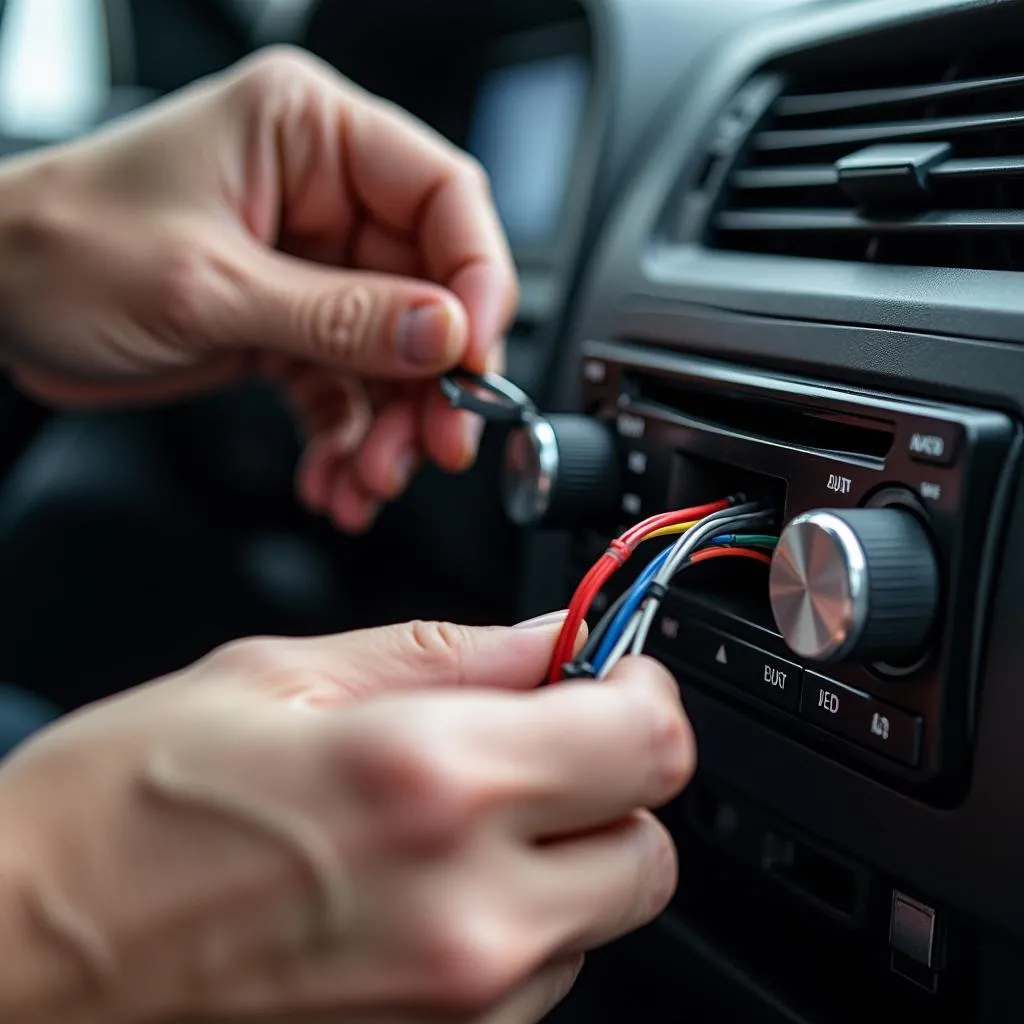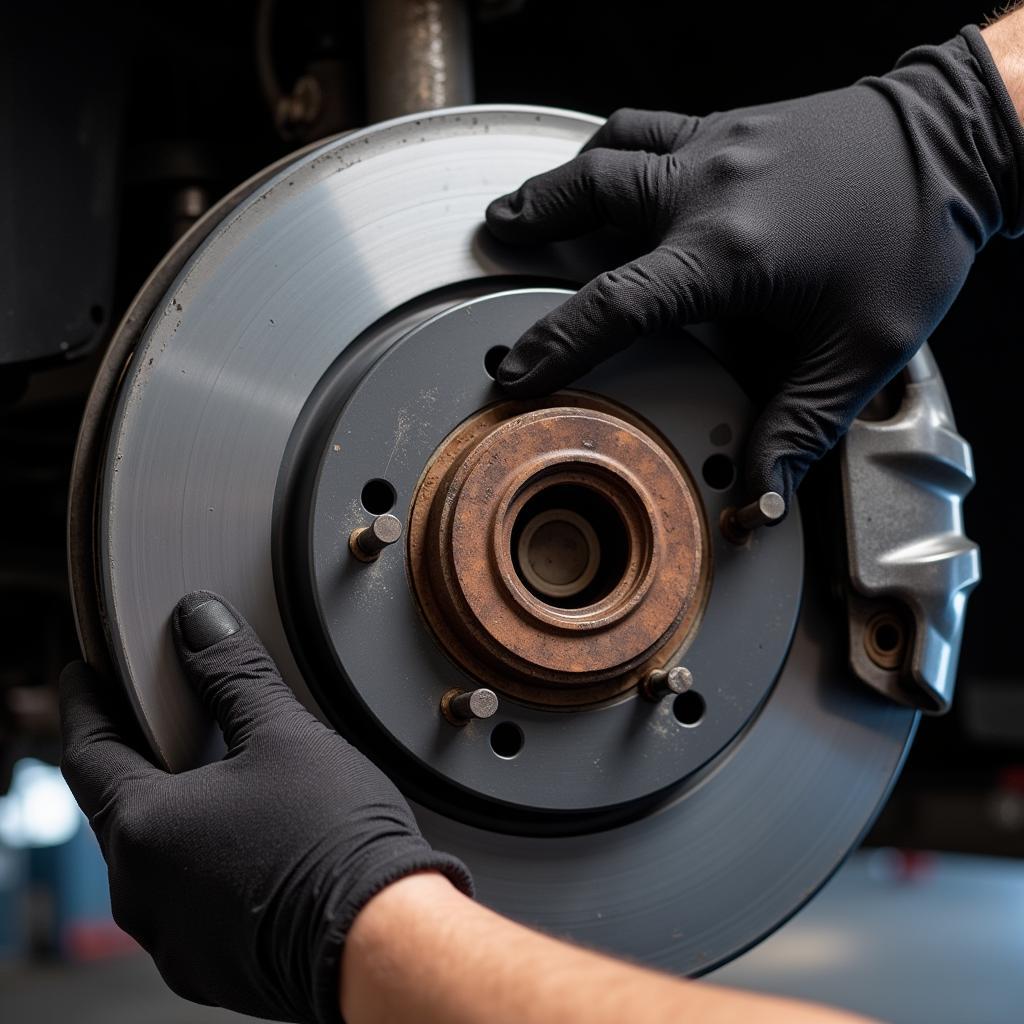The Chrysler 200 brake warning light can be a jarring sight, signaling potential issues with your braking system. Understanding its causes and knowing how to address them is crucial for safe driving. This guide provides a detailed overview of the Chrysler 200 brake warning light, from common causes to diagnostic steps and solutions.
Understanding the Chrysler 200 Brake Warning Light
The brake warning light is part of your car’s essential safety system. It can illuminate for several reasons, not all of which indicate a critical problem. However, ignoring it could lead to more severe issues down the road. Some drivers might mistakenly believe a simple fluid top-up is the fix, but the problem might be more complex. Is your Chrysler 200 equipped with a best bluetooth radio adapter for car? Perhaps you’re looking for a used cars with bluetooth radio.
Common Causes of the Brake Warning Light
One of the most frequent culprits is low brake fluid. Brake fluid is the lifeblood of your braking system, and a low level often indicates a leak somewhere in the system. This requires immediate attention. Another common cause is a worn-out parking brake switch. While less serious than a fluid leak, it can still trigger the warning light. Faulty ABS sensors, crucial for anti-lock braking functionality, can also be the source of the issue. Lastly, worn brake pads are a usual suspect, reminding you it’s time for a replacement.
“A glowing brake warning light is never something to ignore,” says automotive expert John Miller. “It’s always better to err on the side of caution and have a professional diagnose the problem.”
Diagnosing the Problem
If your best bluetooth car adapter radio isn’t distracting you from your brake warning light, begin by checking the brake fluid level. If it’s low, you likely have a leak. Inspect the brake lines and calipers for any signs of fluid leakage. If the fluid level is fine, the parking brake switch could be the issue. Test the switch by engaging and disengaging the parking brake while observing the warning light. If neither of these reveals the problem, it’s time to consider more advanced diagnostics, such as checking the ABS sensors with a diagnostic tool. A professional mechanic can pinpoint the exact cause using specialized equipment.
Solutions and Repairs
Depending on the diagnosis, solutions range from simple DIY fixes to more complex repairs. A low brake fluid level requires identifying and fixing the leak, followed by topping up the fluid. A faulty parking brake switch needs replacement. Worn brake pads require a straightforward replacement procedure. However, issues with the ABS system might necessitate professional intervention. You can explore options for a best bluetooth to car radio adapter while you wait.
What If the Light Stays On After Repairs?
Sometimes, even after addressing the apparent issue, the warning light persists. This could indicate a lingering problem or a faulty sensor. In such cases, it’s best to consult a qualified mechanic to perform a thorough diagnostic scan. “Modern cars rely heavily on sensors,” explains automotive engineer Sarah Chen. “A faulty sensor can trigger warning lights even when there’s no underlying mechanical problem.”
Conclusion
The Chrysler 200 brake warning light is a vital safety indicator that should never be ignored. Understanding the potential causes and knowing how to address them can save you from costly repairs and ensure your safety on the road. From a simple fluid top-up to more complex ABS repairs, addressing the issue promptly is crucial. Don’t delay, address your Chrysler 200 brake warning light today. Need a new car radio bluetooth adaptor? Check out our recommendations.
FAQs
-
What does the Chrysler 200 brake warning light mean? It indicates a potential issue with your braking system, ranging from low brake fluid to faulty ABS sensors.
-
Is it safe to drive with the brake warning light on? While you might be able to drive short distances, it’s highly recommended to address the issue immediately as it could lead to brake failure.
-
Can I fix the problem myself? Simple fixes like topping up brake fluid or replacing the parking brake switch can be done DIY. More complex issues require professional help.
-
How often should I check my brake fluid level? It’s a good practice to check your brake fluid level at least once a month.
-
What should I do if the light stays on after repairs? Consult a mechanic to perform a diagnostic scan and identify any underlying issues.
-
How much does it cost to fix a brake warning light issue? The cost varies depending on the underlying problem. A simple fluid top-up is inexpensive, while ABS repairs can be more costly.
-
Can a faulty sensor trigger the brake warning light? Yes, a malfunctioning sensor can activate the warning light even if there’s no actual mechanical problem.


